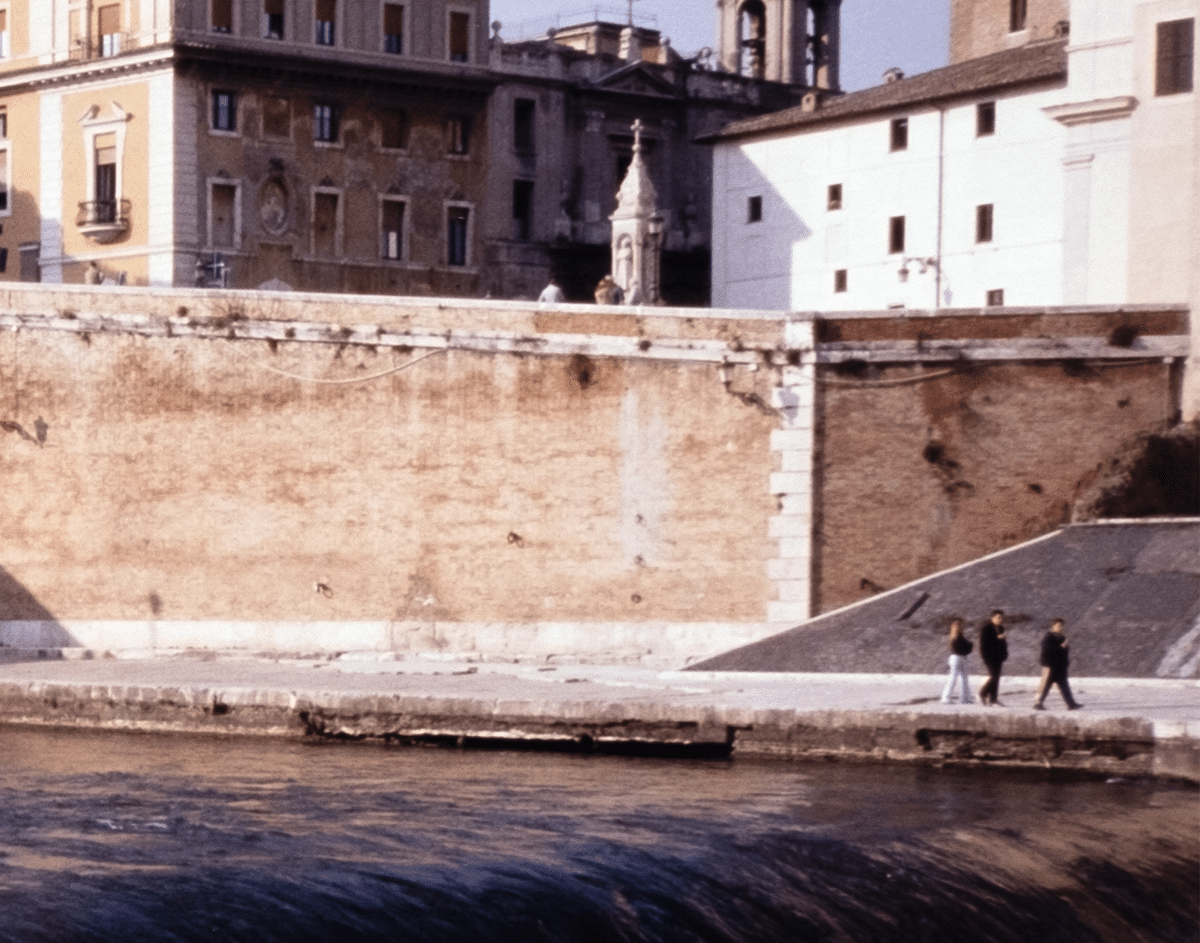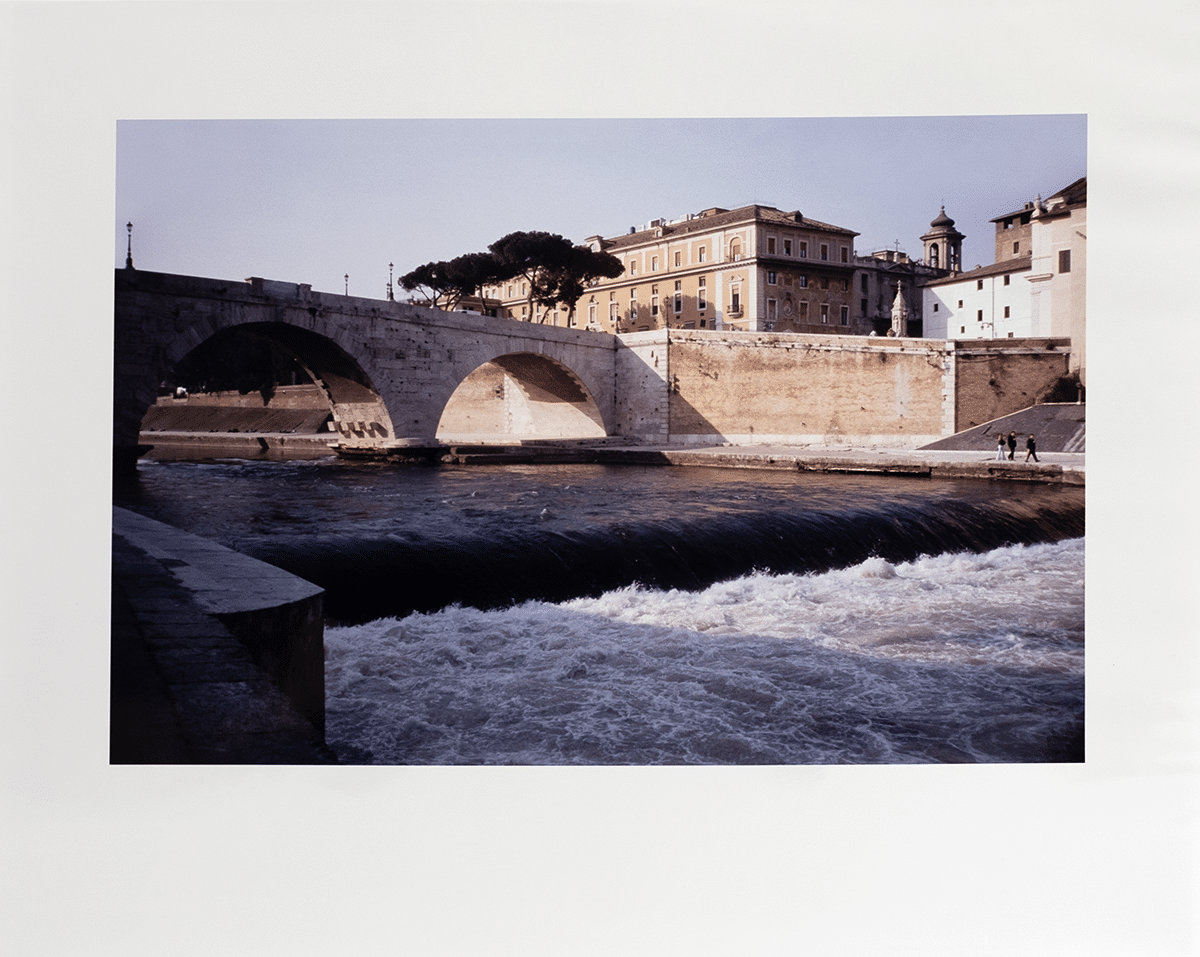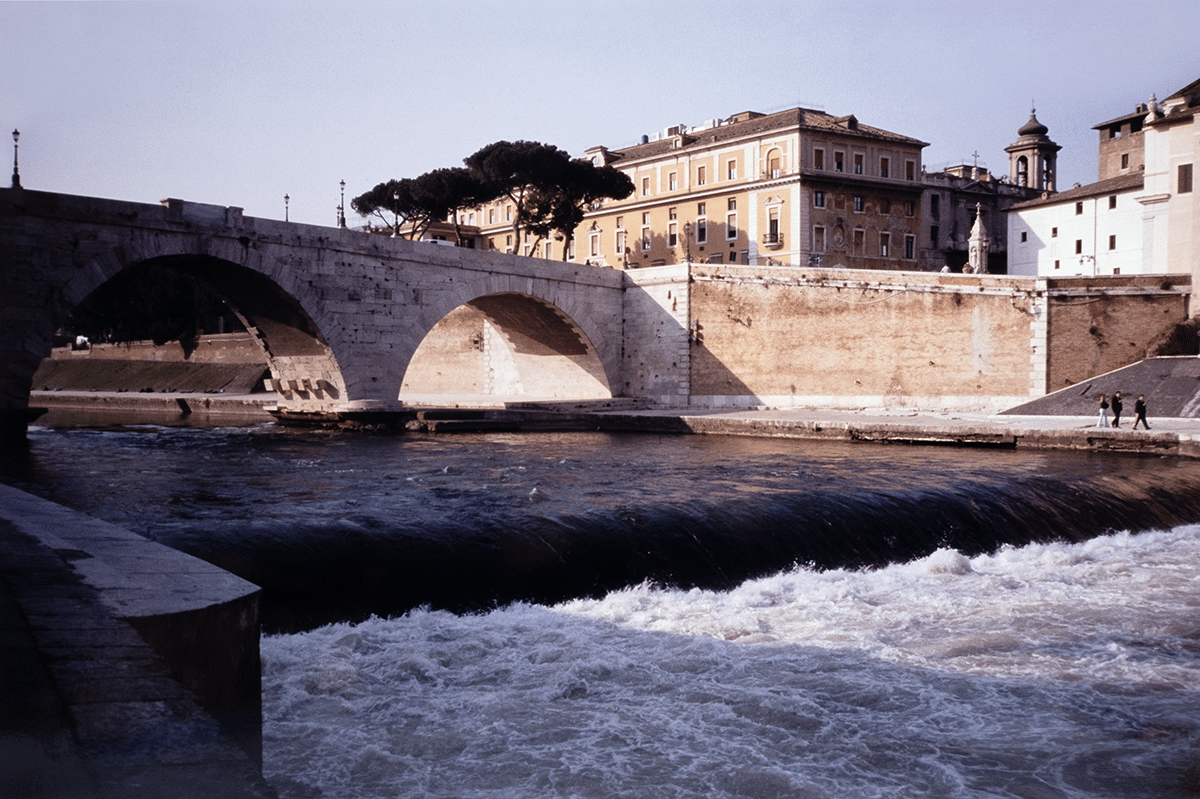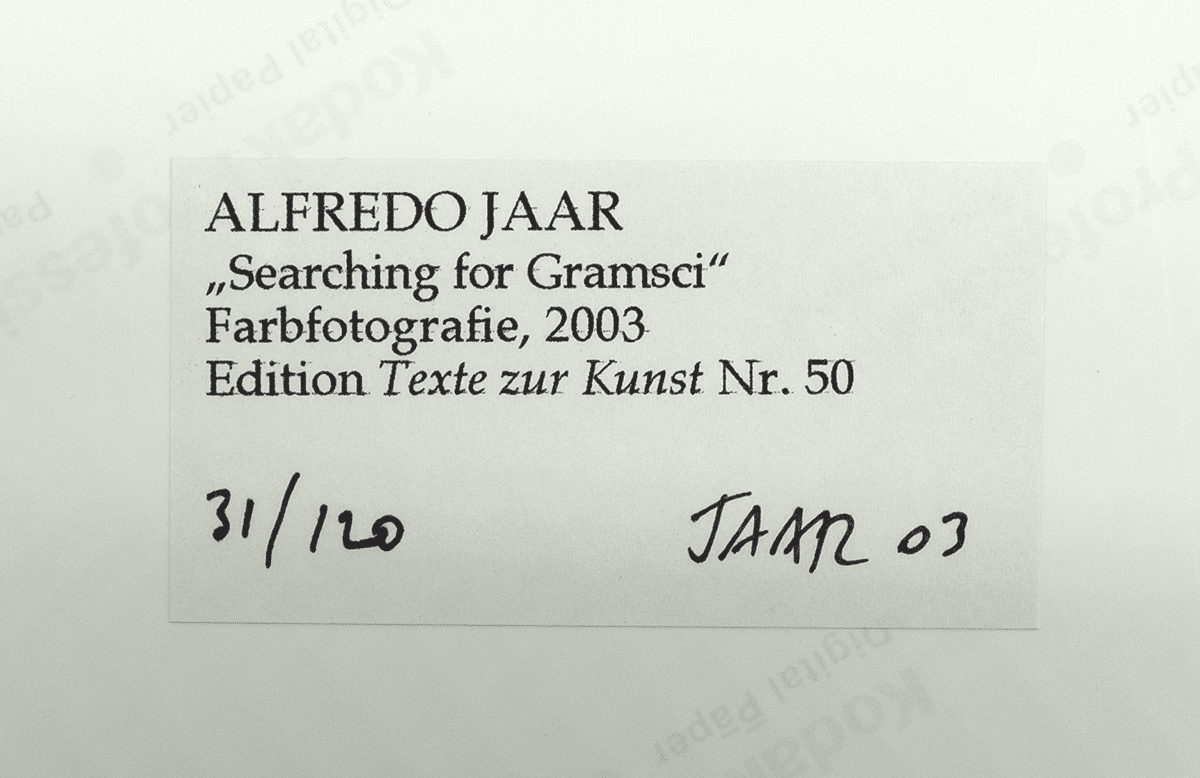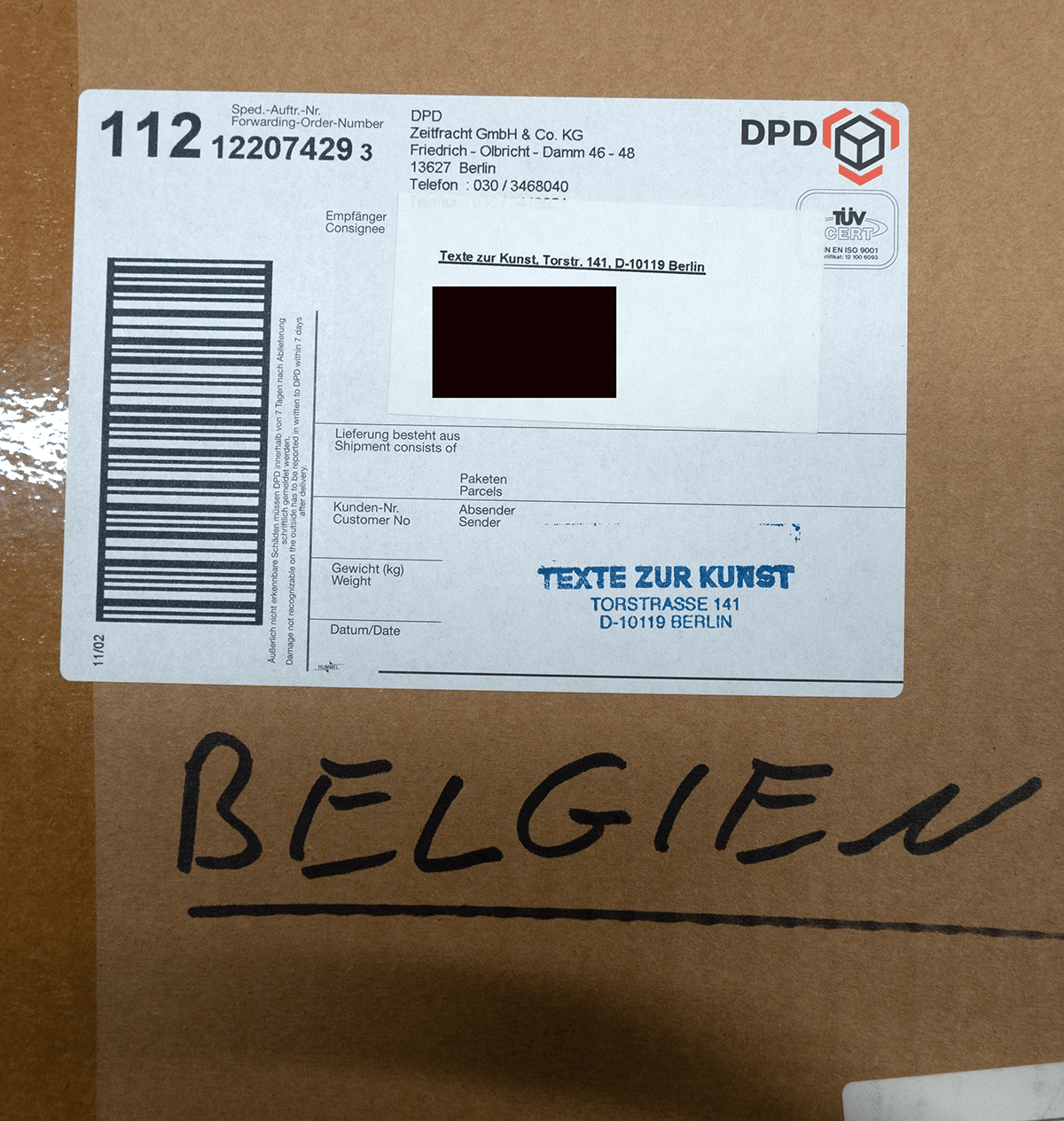The Gramsci Trilogy is a series of installations for MACRO, the contemporary art museum in Rome, dedicated to the Italian philosopher Antonio Gramsci, who was imprisoned under Mussolini's fascist regime. In an interview following this 2005/6 exhibition, Jaar says: People sometimes describe me as a conceptual artist, as a political artist, with work with strong political connotations or social content. I always reject those labels. I'm an artist, and believe it or not, I'm interested in beauty and I'm not afraid of it. It is an essential tool to attract my audience, and sometimes I use it to introduce horror because the audience needs to be seduced. If we learned anything from the activist art of the 1960s, it's that when you make that kind of work, people don't even come close. They don't want to see a drop of blood on the floor. So beauty becomes a tool to bring the audience in(https://art21.org/read/alfredo-jaar-the-gramsci-trilogy).
For Texte zur Kunst, Alfredo Jaar selected a photograph from his project on Antonio Gramsci for MACRO, the contemporary art museum in Rome. The color photograph is numbered and signed on the back. 31/120, 2003 Dimensions image 40.8*27.2 cm, sheet 51.2*40.8 cm.
Back to offer overview
Biography
Alfredo Jaar (1956)
Chilean artist Jaar studied film and architecture at the University of Santiago, Chile. His installations combine elements of photography, architecture and theater. His work is usually a reaction to political events. Influenced by his training as an architect, he sees events in reality as problems where each problem leads to the exploration of different media to represent the subject in question. He is, as he says himself, “an architect who makes art.”
A good example of the combination of art and politics is the Skoghall Konsthall project. Skoghall is a small Swedish industrial town, relatively new and virtually devoid of public spaces. In 2000, a small museum was made entirely of paper on a simple wooden skeleton. The brief for et making the museum was that its required materials were from the paper industry which was very important to the local economy. The museum would host an exhibition of works by young artists. On the third day after the opening, the museum was to be set on fire. The Skoghall Konsthall was meant to alert local residents to a need of which they were probably unaware. The protests that took place before the burning of the building, the requests to preserve it, were intended to make clear the need for a similar space and to create among citizens the power of cooperation. The goal achieved was for a permanent museum to be built in the city.
Information and quotes from:
https://www.scielo.cl/scielo.php?script=sci_arttext&pid=S0717-69962008000300002
https://en.wikipedia.org/wiki/Alfredo_Jaar
https://art21.org/artist/alfredo-jaar/

